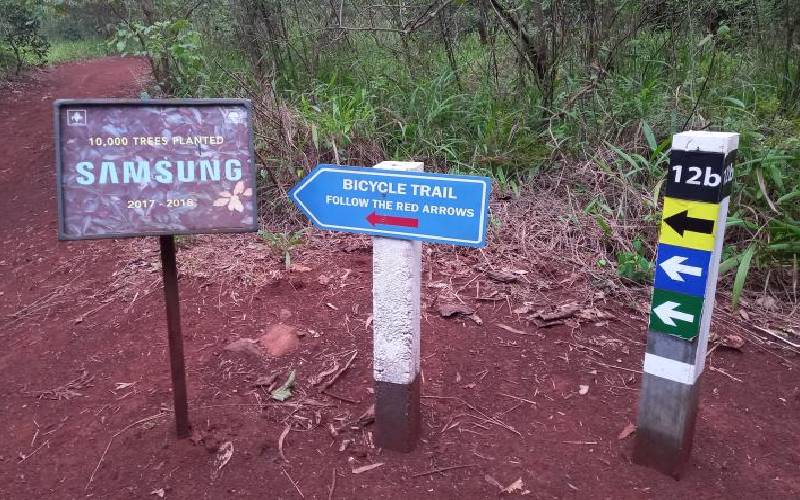The officers seem to have read the adventure mood in many visitors with what can be one of the simplest payment procedures in town. After ascertaining the number of vehicle occupants, the officers send an auto prompt to your phone and all you have to do is put in your service code and off you go. Perhaps other arms of the government would do well to imitate the flawless and cashless payment.
KEEP READING
A few minutes’ drive from the gate took us to the main parking lot where hordes of other thrill-seekers mapped out their ‘territories’. A young Muslim man was content with saying his prayers on a small mat before joining his colleagues for a ball game in an adjacent field. The energy in the young boys in our company called for cycling while some of us were just content with a brisk walk. Karura is home to all.
Trees, some over a century old, including eucalyptus planted by colonialists with the hope of providing fuel for the locomotives of the Kenya-Uganda railway line the routes, dwarfing more recent trees.
From the Celtis Africana, or the white stinkwood, common not only in Africa, but Yemen to the Combretum molle, or the velvet bushwillow — Karura has them all.
It is not all trees in Karura, but the vast biodiversity is home to the small creatures too including various species of butterflies that kept darting across our path. One, in particular, the citrus swallowtail butterfly, kept us company, unlike other species that fly away at the slightest hint of activity.
Birdlife abounds on the route too, including the Ayres hawk, sparrows, vultures, turacos and several varieties of weavers, part of the 113 species of birds in Karura.
A steep incline and a signpost direct us towards the Karura caves and the waterfalls. Here, a flight of steps made of hewn stones leads us first to the dungeons that once hosted the late founding President Jomo Kenyatta and his colleagues in the freedom struggle.
RECOMMENDED FOR YOU

The caves were also objects of veneration by the local Kikuyu community and were long used as places of worship. However, one must exercise caution while visiting the caves as poisonous snakes such as cobras or the muscular python may be lurking in the warmth of the caves.
Not far from the caves is the spectacular 50-feet Karura waterfall, a key attraction in the forest. Karura River has its source in the Limuru Escarpment and is part of a network of four rivers that skirt through the park including Thigiri, Getathuru, and Ruaka.
With the current rains upstream, the waterfall is laden with brown water that cascades over three levels of rock before settling in a whirlpool. The sky above was grey and heavy with rain. There was a distant thunder too, but all such gloomy forecasts were ignored as we just stood there, listening to the sound of the waterfall.
But Karura has not always been this tranquil. Close to 23 years ago, the forest was the scene of a vicious battle pitting environmentalists led by the late Nobel Laureate Wangari Maathai and goons working at the behest of land grabbers.
At the risk of her life, Maathai grabbed global attention and halted the excision of parts of the forest by private developers. At a little over 1,000 hectares, Karura is among the largest gazetted forests in an urban setting globally. BY THE STANDARD MEDIA

